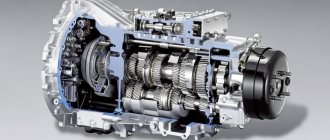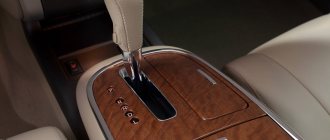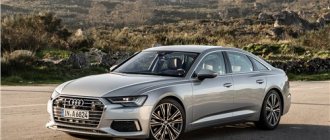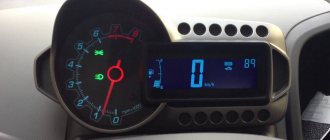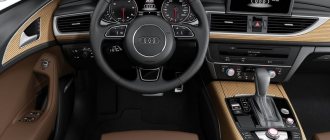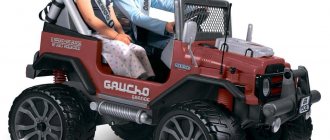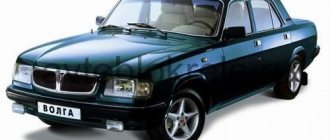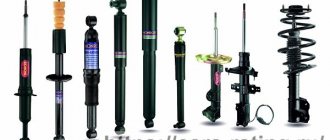S-Tronic - what is it?
The transmission is the most important component of a car. There are many types of automatic transmissions on the market. These nodes are becoming increasingly popular around the world. The ability of the car to move, as well as the comfort of the driver and traffic safety largely depends on the correct operation of this part. One of the most modern trends in the development of new devices is the creation of robotic preselective units in combination with an electronic control unit.
The concept of preselective s-tronic means that the next gear (it doesn’t matter: lower or upper) is already engaged by the system, which greatly increases driving comfort, increases acceleration dynamics, and also significantly saves fuel.
One of the most progressive is considered to be a device with two clutches of the as tronic gearbox. This unit is a further logical continuation of the DSG system from the German VAG, which also includes Audi. However, this device is the company’s own development, based only on the operating principle and layout of its “younger” brother. This unit consists of several parts (which is how it differs from other automatic transmissions):
- The electronic control unit for the s tronic automatic transmission system is a mass of various sensors and a single unit that synchronizes the operation of the shafts and clutches while the vehicle is moving. This electronic unit of the system is the most important part, since it is the electronic algorithm that allows you to quickly and adequately change gears. Moreover, this part is one of the most expensive to repair. S-tronic sensors constantly signal and send a lot of information to the main unit about the road situation, speed, engine parameters, driver's driving style and other indicators that allow the system to quickly adapt. In addition, the cost of this unit when it fails is quite high. However, in the absence of mechanical damage to the system unit, problems with it do not often arise.
- Unit clutches – this box contains 2 clutches that operate asynchronously. One is responsible for turning on even gears, the second odd. Thus, smooth and high switching speed is achieved, which is less than 1 second. The operation of these components is controlled by an electronic control unit.
- The shafts of the s-tronic unit perform mechanical work inside the box by moving torque and controlling the clutch. The unit also contains a hydraulic unit, which is responsible for the operating pressure inside the transmission. In inexpensive versions of this type of robotic box, an electric analogue is installed, which is less efficient in its performance. The operation of this unit is also controlled by an electronic unit.
This system makes it possible to simplify the process of driving a car, as well as save fuel; moreover, such boxes can easily “digest” high torque, unlike, for example, non-shifting competitors (variators), which allows them to be combined with powerful engines in the Audi line. The system became most widespread in combination with the Audi A6C tronic model, which significantly increased overall sales.
What is S-tronic: advantages and disadvantages
Today, manufacturers offer consumers various types of automatic transmissions, both “classic” automatics and CVTs, as well as robotic gearboxes with one or two clutches.
If we talk about robot boxes, there are a large number of similar transmissions. For example, DSG on Volkswagen, Skoda or Seat models, PowerShift on Ford cars, MultiMode from Toyota, etc. In this article we will look at the S-tronic gearbox, problems, advantages and features of this automatic transmission.
Read in this article
Pros and cons of the S-Tronic gearbox
Like any complex unit, such a box has both its pros and cons. The positive features of the s tronic system audi a6 c7 include:
- Quick gear changes of the unit due to the design features of the transmission and the operation of the electronic unit. The average reaction time of the unit both when moving to the upper and lower stages is about 0.7 seconds.
- Significant fuel savings of the unit compared to competitors. Based on the design of the system itself, in fact such a box is mechanical with an electronic control unit that independently depresses the clutch (one of two) and changes gear. This allows you to reduce fuel consumption, regardless of the class of the car, by an average of 15-18%, which also depends on the correct operation of the S-Tronic electronic unit.
- Dynamics of car acceleration. Taking into account the reaction time of the box when switching, the dynamics of acceleration to 100 km/h are no different from mechanical competitors and are quite superior to their automatic counterparts - torque converters and CVTs. In combination with powerful engines, the difference between a tronic and a classic automatic is more dynamic acceleration.
Despite the technological advantage of the box and the undeniable positive aspects, this box also has negative features that may become an obstacle for some category of owners to purchase the unit. These include:
- Uncomfortable unit switching in traffic jams. This feature also comes from the design. When driving at low speed for a long time, the S-Tronic clutch can overheat, which when shifting can lead to jolts, kicks, as well as chaotic “jumping” from 1st to 2nd gear.
- Compared to competitors, the service life of the main parts of the system and, above all, the clutch, which some drivers have to change even before reaching 100 thousand km, are shorter. Designers are constantly improving the unit and this part of the system, but at the moment, in terms of the overall level of reliability, the robotic gearbox with Audi tronics has certain problems with long-term reliability.
What is the cost of repairing and replacing mechatronics?
When repairing, the estimate is based on the cost:
- replaceable parts;
- dismantling and installing the unit;
- repair work;
- reprogramming and adapting the unit to your car.
- Mechatronics replacement includes:
- selection of a suitable mechatronics model;
- dismantling the faulty unit and installing a new one;
- firmware and adaptation.
We provide long-term warranties for both DSG repairs and new equipment. To order a service, contact the manager by phone or leave a request on the website, and we will call you back.
Repair of DSG (S tronic) Audi A4
Differences between S-Tronic and DSG
Structurally, the units of the S-Tronic and DSG systems are very similar, but there is only one significant difference - in the gearbox itself, the DSG has a less reliable electric unit, while the product from Audi has a valve body. These devices regulate oil pressure and build an algorithm when sending signals from the control device. The hydraulic unit of the system is considered a more complex and advanced design, while its reliability has been tested not only by sea trials, but also by practice. Cases of failure of the unit of this unit are rare in practice and most often occur due to improper operation of the system itself.
S-Tronic adaptation
Another advantage of this unit is the training mode of the box itself. The electronic control unit of the unit, accumulating information about the driver’s driving style using various sensors, tries to adapt to his driving style. In certain cases this is expressed:
- with an aggressive driving style, the S tronic automatic transmission, after completing the training program, will try to quickly tuck into the desired top gear, this will affect both the sensations of acceleration dynamics and comfort;
- When driving quietly, mainly in traffic jams, the transmission will try to drive in low gear for as long as possible to avoid kicking.
The system's training mode is counted from the moment the engine starts. One cycle takes 8-10 such launches.
Causes of failure
Most often, the unit fails due to the fault of the owner. Main causes of malfunction:
- ignoring recommendations on the frequency of maintenance (replacing technical fluid and oil filters);
- operating a vehicle without pre-warming the transmission;
- towing other vehicles or heavy trailers;
- operation in urban environments (frequent stops in traffic jams, traffic lights, pedestrian crossings);
- aggressive driving style with sharp acceleration and braking.
Usually, problems in the operation of mechatronics begin with the failure of accompanying links. The block continues to try to connect to these links, but to no avail. The driver learns about this by the activated emergency mode. In this case, you need to immediately contact a car service, since inaction will lead to associated breakdowns and an increase in the cost of repairs.
S-Tronic diagnostics
Diagnostics of such a gearbox must be carried out only by a certified service center. Taking into account the technological complexity of the unit, checking the condition of all systems is carried out in several stages:
- The electronic control unit of the unit is checked for various types of errors using only certified equipment. This diagnostic helps to identify various errors and find out the condition of most sensors and gearbox components.
- Diagnostics of the mechanical part of the s-tronic is most often carried out when signs of a malfunction appear, in combination with an electronic check. This method involves opening the gearbox housing, inspecting and troubleshooting the components.
S-Tronic reliability
The reliability of the s-tronic system will entirely depend on the operating conditions and driving style of the owner. So, with long highway runs, frequent changes of high-quality oil to the original one and low loads, such a unit is quite capable of reaching the required mileage of 200 thousand km.
However, in practice, this regime is not always achieved. According to most experts, this type of box is the least reliable among all automatic competitors, although every year designers make a lot of changes to improve its endurance. In 5-7 years, based on the results of these modernizations, this type of s-tronic will be comparable in terms of reliability with the most durable units such as a variator and torque converter.
S-Tronic resource
The resource declared by the manufacturer for this system is 200,000 km. However, adhering to the scheduled oil change at 60,000 km and combining it with aggressive driving, it is almost impossible to achieve this figure. As a result of malfunctions, individual s-tronic elements can appear as early as 100 thousand kilometers, and major repairs most often occur at 150 thousand. To extend the life of the unit, it is necessary to frequently change the transmission oil and drive as little as possible in traffic jams, thereby preventing the system from overheating.
Audi A6: new gearbox and experiments with suspension springs
“Under the wing of an airplane, the green sea of the taiga is singing about something”... Under the wings of the updated Audi A6 station wagon, the green suspension springs remain silent - and help save fuel. For us, however, this is not relevant. What about other changes?
Carbon fiber-reinforced polymer springs are Audi's know-how. Pale green with veins, as if wrapped in a leaf of Chinese cabbage, the spring is a little over a kilogram lighter than steel. “More than four kilograms of weight loss,” the Germans are proud. That is, one five-liter canister of “anti-freeze”, which will be stored in the trunk at the beginning of the cold season, will reduce the efforts of innovators to nothing.
Composite materials are rarely used in the suspension of production cars, and, as a rule, these are transverse springs made of glass or carbon fiber. This was the case with Volvo 960 cars, and then with the S90/V90 family and General Motors models on the W and E platforms (Chevrolet Lumina, Buick Regal, Cadillac Allante). The most famous car with a plastic spring is the Chevrolet Corvette. In the same issue of Autoreview, Sergei Znaemsky talks about the experimental hybrid Renault Eolab, in which aluminum trailing arms of the suspension are glued to a carbon fiber cross member. This design is not designed for low temperatures, but the green Audi springs are quite frost-resistant.
But for now they are several times more expensive than steel ones: the Germans admit that this is a full-scale experiment, and customer reviews are important to them. Unfortunately, they don’t ask us: plastic parts will only be on a station wagon with a two-liter turbodiesel, which is almost never bought in Russia. But in Germany this version accounts for up to a third of sales.
On the move, the lightweight springs do not show themselves in any way, because their characteristics coincide with the usual ones, and the suspension settings remain unchanged. There's a nice balance between sway and profile follow-up: the Audi rides tightly and "notices" sharp bumps, but there's no shaking. A two-liter turbodiesel (190 hp) on paper promises fantastic fuel consumption, only 4.2 l/100 km in the combined cycle - there is even an ultra nameplate on the trunk lid, indicating the most economical versions. However, without eco-fanaticism on the part of the driver, the station wagon spends almost twice as much. The unit meets Euro-6 standards, but will be sent to Russia without a particulate filter, with the status downgraded to Euro-4. Maybe he will drive more cheerfully? The pleasant turbo boost in the back is barely noticeable, and after a hundred the acceleration completely sours.
Of the new finishing options, textured wood veneer is especially good. The MMI multimedia system has the same graphics, but twice as powerful a Tegra processor with a clock speed of 1 GHz
The service life of a composite spring (left) is no less than that of a steel spring - over 100 thousand km
The seven-speed “preselective” is taught to coast. The arrow shows the hydraulic accumulator, which allows you to turn off the electric oil pump from time to time.
0 / 0
Before the update, the most popular engine under the hood of the A6 remained the two-liter 2.0 TFSI petrol engine (211 hp). Now it has a different turbocharger, a tricky exhaust manifold, which combines the channels of the first-fourth and second-third cylinders, working synchronously. As a result, power increased to 252 hp, exceeding the psychologically important mark from a tax point of view of 250 hp. Of course, at a price of just over two million rubles, forty thousand tax is nothing, but when sold on the secondary market they will certainly play a role.
Confident acceleration, easy overtaking, a wide active zone starting from 2000 rpm... The new seven-speed S tronic preselective robot with wet clutches gets along well with the two-liter turbo engine. The unit with the index DL382 (torque limit - 400 Nm) replaced the multitronic V-chain variator on single-wheel drive A6s and immediately gave an eight percent gain in fuel consumption! Here, of course, it would be necessary to talk about problems with the reliability of the “preselective”, but longitudinally located “robots” with wet clutches on older Audi models break down much less often than Volkswagen’s “transverse” DSGs. But multitronic often required replacing a stretched chain after one hundred thousand kilometers.
By the way, for the sake of greater efficiency, the new “robots” have reduced the volume of oil they fill - isn’t it reckless? There are also two electric oil pumps: one for the mechanical part, the second for the clutches. The latter is activated only when switching. They are very soft in the new box: no jerks at low speeds or jolts during a smooth stop, and the familiar flashes of the tachometer needle when changing gears appear only in sports mode.
Overall, I recommend it. Especially paired with the initial 1.8 TFSI turbo engine (190 hp) - it also has the ultra nameplate. The loss in dynamics relative to the two-liter engine is subjectively almost unnoticeable, but such a sedan drives more lively and more honestly. It takes turns more readily, the steering wheel is the “cleanest”, and the brakes are “transparent”. Once again I am convinced that the basic versions are often the most interesting, not only from a price point of view!
By the way, the A6 1.8 TFSI can be bought for 1 million 880 thousand rubles - 200 thousand cheaper than the two-liter version.
Do you want a more serious option? I recommend the Audi 3.0 TFSI (333 hp). The speakers are enough for two such cars, and, unlike the 3.0 TDI version (245 hp), there is no feeling that, along with a couple of additional cylinders, several ballast bags with shot were placed under the hood. And a fairly reasonable price: from 2 million 565 thousand. This is more than a million cheaper than the Audi S6 (450 hp), which will also hit the limiter at 250 km/h, and will gain only half a second in acceleration to hundreds (4.6 s versus 5.1). Around Dresden, where villages and towns line the road like an endless backdrop, driving the S6 was pure agony. Very similar to Moscow conditions. All that the S6 indulges in within such a framework is a low baritone V-shaped “eight”. But he's not worth a million.
So what's new in the A6 besides green springs and a new “robot” on front-wheel drive? Nothing! Small “cosmetics”, light ripples on calm water.
And judging by the sales results, a storm is needed. Both in Russia and in European countries, Audi is inferior to classmates of the BMW and Mercedes-Benz brands, although the previous generation became the most popular in the West three times, from 2005 to 2007. But there is peace of mind in the LED headlights of the Audi A6: there will be no major changes. This sea does not worry. Never.
| Passport details | ||||||
| Automobile | Audi A6 | |||||
| Modification | 1.8TFSI | 2.0TFSI | 2.0 TDI | 3.0TFSI | S6 | |
| Curb weight, kg | 1535 (1570)* | 1595 | 1660 | 1750 | 1895 | |
| Total weight, kg | 2115 (2150) | 2175 | 2240 | 2360 | 2505 | |
| Engine | petrol, direct injection and turbocharged | petrol, direct injection and turbocharged | diesel, turbocharged | petrol, with direct injection and mechanical supercharger | petrol, direct injection and turbocharged | |
| Location | front, longitudinal | front, longitudinal | front, longitudinal | front, longitudinal | front, longitudinal | |
| Working volume, cm3 | 1798 | 1984 | 1968 | 2995 | 3993 | |
| Max. power, hp/kW/rpm | 190/140/4200-6200 | 252/185/5000-6000 | 190/140/3800-4200 | 333/245/5500-6500 | 450/331/5800-6400 | |
| Max. torque, Nm/rpm | 320/1400-4100 | 370/1600-4500 | 400/1750-3000 | 440/2900-5300 | 550/1400-5700 | |
| Transmission | mechanical, 6-speed (robotic, 7-speed) | robotic, 7-speed | robotic, 7-speed | robotic, 7-speed | automatic, 8-speed | |
| Drive unit | front | front | front | permanent full | permanent full | |
| Front suspension | independent, spring, double wishbone | independent, spring, double wishbone | independent, spring, double wishbone | independent, spring, double wishbone | independent, spring, double wishbone | |
| Rear suspension | independent, spring, multi-link | independent, spring, multi-link | independent, spring, multi-link | independent, spring, multi-link | independent, spring, multi-link | |
| Maximum speed, km/h | 233 (233) | 250 | 232 | 250** | 250** | |
| Acceleration time 0-100 km/h, s | 7,9 (7,9) | 6,7 | 8,2 | 5,1 | 4,6 | |
| Fuel consumption, l/100 km | urban cycle | 7,5 (7,1) | 7,4 | 4,7 | 9,8 | 13,1 |
| suburban cycle | 5,0 (5,0) | 5,1 | 3,9 | 6,0 | 6,9 | |
| mixed cycle | 5,9 (5,7) | 5,9 | 4,2 | 7,4 | 9,2 | |
| CO2 emissions, g/km | mixed cycle | 138 (133) | 137 | 109 | 172 | 214 |
| * Data in brackets are for vehicles with S tronic transmission ** Electronically limited | ||||||
S-Tronic faults
Typical malfunctions due to violation of operating rules or design features include the following:
- Clutch wear due to overheating, increased loads, and disruption of the electronic algorithm. This problem occurs most often on this device. At the same time, replacing the s-tronic clutch is the most cost-effective operation on this type of gearbox; on average, such an operation will cost the owner about 60-70 thousand rubles.
- Failure of the S-Tronic electronic unit and shafts as a result of desynchronization of actions. Burnout of sensors, moisture ingress, as well as mechanical damage to the S-Tronic electronic unit can lead to failure of the entire unit. Such a problem in s-tronic requires professional intervention and large investments, since often not only the unit itself, but also many sensors must be replaced.
- Leaks in the S-Tronic housing and seals. This problem is quite rare, most often due to the use of a low-quality transmission or mechanical damage to the housing itself. However, if the S-Tronic system is starved of oil, the entire unit may fail and cannot be repaired. The cost of such a new assembled gearbox is about 400-600 thousand rubles.
Audi S-Tronic automatic transmission: features
The Volkswagen concern began work on creating preselective automatic transmissions back in the first half of the 80s of the last century. In 2002, the developed S-Tronic gearbox with a pair of clutches made its debut in mass production. During this time, this unit has been significantly refined and improved, and even its new generations, due to a long period of operation, periodically require qualified repairs and maintenance (for example, replacing the automatic transmission oil pump). We’ll talk in more detail about the features of the S-Tronic and reviews from owners of cars with it.
S tronic - What is it
Audi S tronic is a robotic gearbox with unique properties, capabilities and qualities. The design of the S tronic preselective gearbox includes two rows of modes (essentially, these are twin shafts with gears from independent manual transmissions combined into one mechanism) and two clutches, each of which is responsible for the operation of its gears - even and odd rows.
For example, when the car accelerates, second gear is engaged, then the automatic transmission is activated and instantly switches to third by opening the clutch discs of the (even) row and connecting the next one. The process of switching to another mode occurs very quickly, with no characteristic jerks or delays; power from the power unit is transmitted in a continuous flow through a preselective transmission to the vehicle's chassis.
Automatic transmission on Audi: S–Tronic gearbox and features
Let's start with the fact that today we can note the active development and improvement of various types of automatic transmissions. Moreover, each type of automatic transmission has both pros and cons.
At the same time, the main disadvantage is considered to be that at the moment of gear shifting there is a break in the power flow. This affects comfort, acceleration dynamics, fuel efficiency, etc.
It would seem that a continuously variable transmission has solved this problem, but the reliability and low maintainability of such gearboxes casts doubt on the likelihood that CVTs will supplant other types of automatic transmissions. For this reason, manufacturers offer modified step-by-step automatic transmissions, both robotic and automatic. The Audi S-Tronic gearbox is a representative of the family of robotic gearboxes.
It was based on the principle of operation of a manual transmission, but there are two shafts and two clutches. The presence of two clutch packs allows you to change gears very quickly, with virtually no interruption in the power flow.
All these features can significantly improve dynamics, increase comfort and safety, make it possible to reduce fuel consumption, etc. Audi cars today are equipped with a 7-speed s-tronic robotic preselective gearbox. Audi S-Tronic can withstand torque up to 550Nm. The box is structurally complex, but goes well with all-wheel drive.
The S-Tronic gearbox (analogous to DSG-7) is a box with a “dry” clutch. The unit has compact dimensions, which allows it to be installed on different car models (even taking into account the small engine compartment space). In other words, the s-tronic preselective automatic transmission can be found both on compact Audi A1 and A3, and on Audi Q3 crossovers, etc.
If we consider the device, the design of the S-Tronic box is highly complex. To understand how S-Tronic works, you can imagine a conventional manual transmission with the possibility of fully automatic gear shifting. Moreover, there are two such boxes combined in one case. Moreover, one has only even, and the other odd, gears.
While one gear is engaged, the ECU also keeps the next gear selected and almost engaged. When the moment of shifting comes, all that remains is to engage the clutch to engage the next gear. Switching occurs in a fraction of a second, the driver practically does not feel that the gearbox has moved from one stage to another.
There is also a manual switching mode, for which steering column switches (petals) are provided. The driver gets the opportunity to independently increase and decrease gears and use the full power of the engine, which can be revved to maximum speed (similar to a manual transmission).
Another noteworthy thing is that the S-tronic box allows you to get rid of understeer of the car due to the fact that the clutch packs are compressed when turning to the right. When turning left, the vehicle is locked using a hydraulic drive. The result is that more torque is supplied to the right wheel.
Also, the seven-speed s-tronic transmission has a flexible control and self-diagnosis system. If malfunctions and failures occur, the driver receives error information. In this case, you need to visit a service center for diagnostics or repair the S-tronic.
Pros and cons of the DSG S tronic robot box
A high-tech robotic box has all the positive qualities inherent in both traditional mechanical devices and automatic machines. Thanks to the electronic control unit, which operates using complex circuits and algorithms, driving the vehicle is more comfortable.
Car owners who own a vehicle with a DSG S tronic preselective gearbox note the following advantages of their cars:
- Relatively small dimensions and weight of the mechanism.
- Improved car dynamics.
- Smooth and, at the same time, fast acceleration of the car.
- Instant speed switching (takes no more than 0.8 seconds).
- Economical (fuel consumption savings - at least 10%).
- The absence of a clutch pedal makes it easier to control the gearbox.
If some problems occur during operation of the robotic gearbox, the driver receives appropriate warnings. By contacting the service center in a timely manner, repairing the entire device is simplified. Using special diagnostic devices, qualified workers quickly find problems that have arisen in the vehicle and fix them in a short time.
Among the observed shortcomings, the following factors are noted:
- the relatively high cost of the mechanism, which is reflected in the price of the entire car;
- expensive qualified maintenance of the si-tronic, since partial or complete oil changes, as well as the oil filter, should be carried out only in specialized service centers;
- complicated box design.
When the working units and parts of the differentials wear out, various negative symptoms begin to appear:
- Dips, shocks during acceleration and transition to high speeds.
- Vibrations when switching from first to second speed.
Advice: Experienced car owners recommend regularly changing the oil in the preselective transmission. In their authoritative opinion, the maximum mileage between these procedures should not exceed 40 - 50,000 km. Ignoring these recommendations may cause failure of the friction discs of the clutch mechanisms and malfunction of the solenoids. The s-tronic uses only original gear oil of the brand recommended by the car manufacturer. Simultaneously with replacing the lubricant, it is necessary to replace the oil filter so that the wear elements that are on the metal mesh of the filter element do not get back into the fresh ATP oil.
Recommended consumables and devices:
- ATF oil G052529A2 - 6 liters.
- Filter 0B5325330A.
- Filter seal WHT005499A.
- Pan gasket 0B5321371E.
How does S-Tronic work?
Structurally, this development of the Volkswagen concern is closer to manual gearboxes, which are equipped with a robot - an automatic device that switches gears. In cars with S - Tronic, the use of steering wheel paddles (switches for manual shift) is assumed, although the automatic mode copes with the tasks quite effectively. The process of both automatic and manual switching takes a fraction of a second, and there is no loss of power, since two clutches are engaged.
The 7-speed S-Tronic transmission for Audi is distinguished by the presence of a computer control system that monitors all parameters of the transmission. If any problem occurs, for example, the automatic transmission cooling oil cooler fails, the computer will display a warning on the dashboard. Thanks to this feature, it not only simplifies the operation of the car and increases driver comfort, but also makes it possible to respond to breakdowns in a timely manner and reduce the cost of maintenance and/or repair of the unit.
Modern diagnostic equipment used in service centers also helps to quickly identify a malfunction and eliminate it if the warning about the problem is general (there is a warning from the transmission computer, but without specifying the reasons).
Another specific feature of this preselective gearbox is that it provides greater maneuverability when turning. When maneuvering to the right, turning ability increases due to the compression of the friction packs, and when turning to the left, hydraulic locking occurs, which gives the right wheel increased torque.
Reviews from car owners about S tronic Audi robotic gearboxes
Judging by the numerous opinions and reviews from drivers about S tronic gearboxes, this device has a large number of both positive and negative qualities. When assessing the performance of robotic transmissions, consumer opinions differ diametrically.
Cars equipped with a robotic gearbox have been highly appreciated by happy car owners, thanks to the increased level of the following indicators:
- Comfortable operation of the Audi S tronic gearbox.
- Profitability expressed in relatively low fuel consumption.
- Excellent acceleration dynamics.
At the same time, great doubts and complaints are expressed about the reliability of the preselective gearbox, as well as the difficulty of restoring the unit’s functionality.
To receive qualified maintenance and repair services, you must contact only certified service centers from Volkswagen or Audi. Most repair shops do not undertake the repair and restoration of robotic gearboxes, in particular S tronic.
List of mechatronics breakdowns that we fix
The VAG-ID workshop has a full range of equipment and spare parts for repairing DSG gearboxes. We will carry out visual and instrumental diagnostics, based on which we will draw up an estimate, indicating a list of works and a reasonable price.
Here is a list of problems that our specialists can handle:
- When starting to move or when switching, jerks and jolts occur, and the emergency mode indicator does not light up.
- When reverse gear is engaged, the car goes into emergency mode. As a rule, in this situation, an error is displayed based on the results of instrumental diagnostics.
- When you engage reverse gear, extraneous sounds occur.
- When you start the car, the transmission immediately goes into emergency mode. This occurs due to a short circuit leading to an open circuit or a malfunction of the pressure control valves. We determine the cause by the error code using a scanner.
- The car does not go into emergency mode immediately after starting to move, but after some time. This usually occurs due to a faulty electronic unit or low oil pressure.

